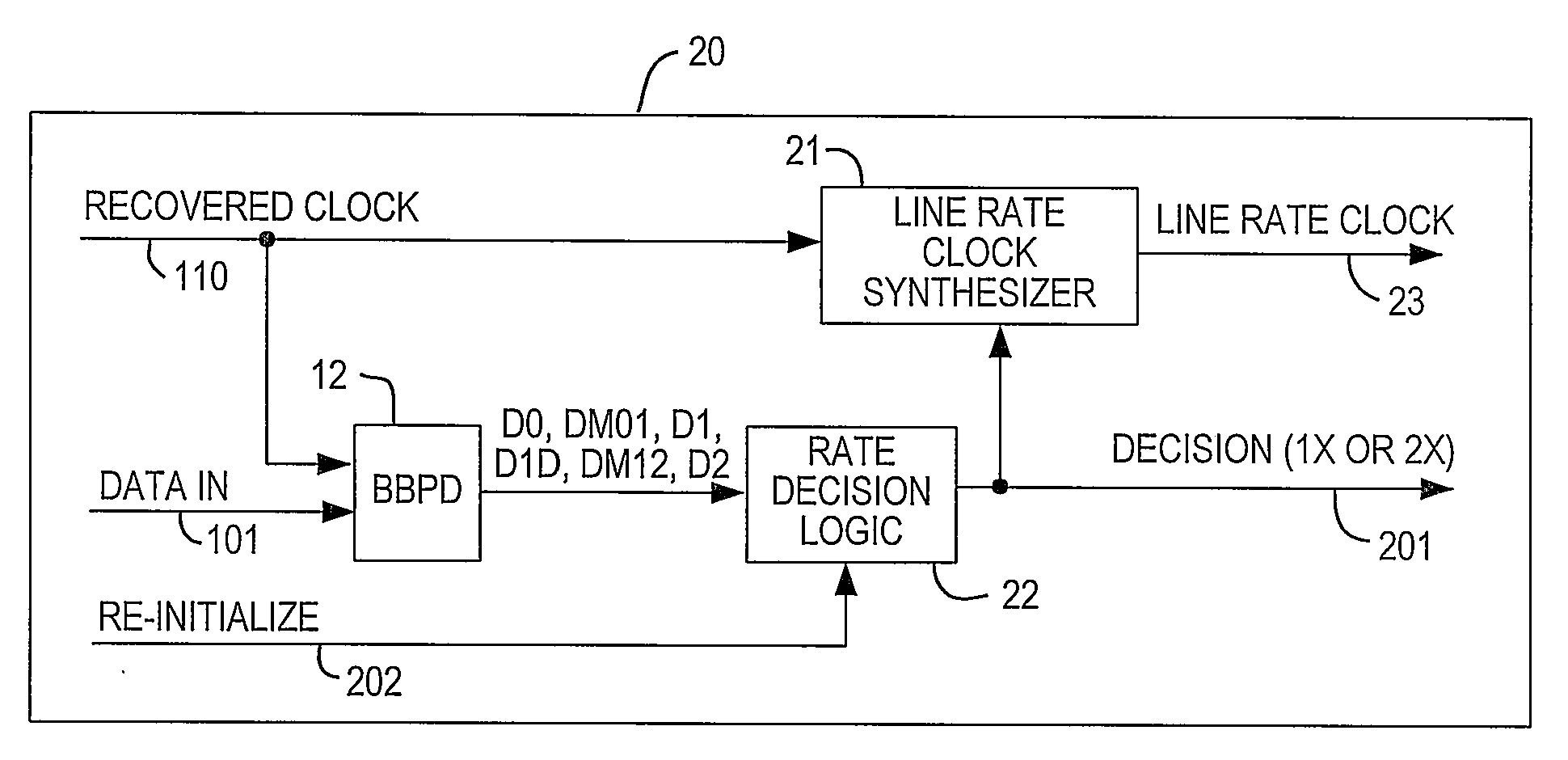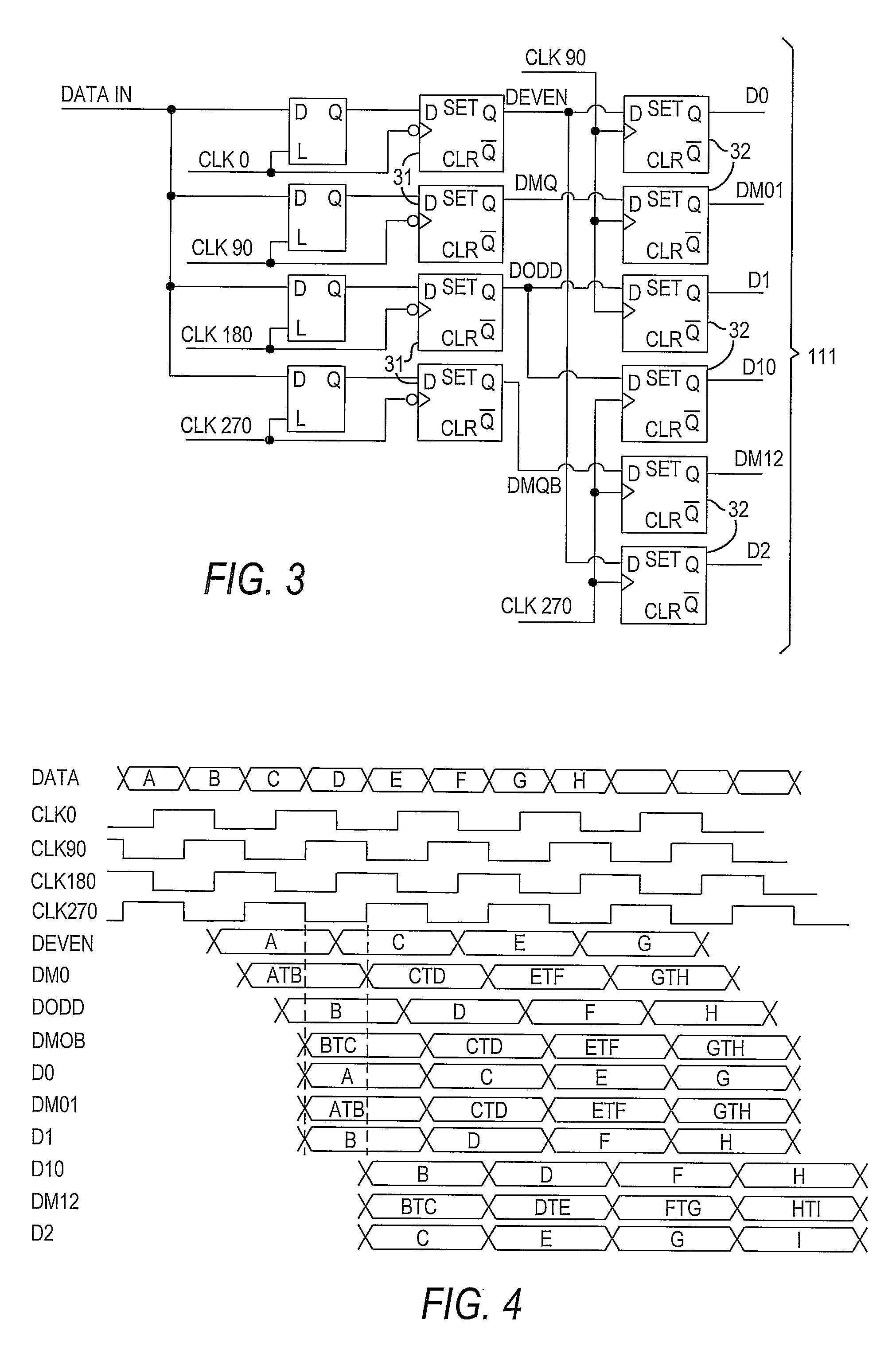Protocol-agnostic automatic rate negotiation for high-speed serial interface in a programmable logic device
- Summary
- Abstract
- Description
- Claims
- Application Information
AI Technical Summary
Benefits of technology
Problems solved by technology
Method used
Image
Examples
Embodiment Construction
[0017]As described above, the present invention preferably is used to detect whether a data channel of a high-speed serial interface is operating in full-rate mode or half-rate mode, by determining whether two occurrences of a single-bit transition (i.e., a data transition from “0” to “1” to “0” or from “1” to “0” to “1”) occur within a predetermined time interval on that data channel. The interval preferably is selected such that two occurrences of a single-bit transition mean that the data channel is operating in full-rate mode.
[0018]However, in order to be certain that lack of two occurrences within the predetermined interval during the training period means that the channel is operating in half-rate mode, the system preferably begins in half-rate mode. This is clear if one considers the possibilities of beginning in full-rate mode and beginning in half-rate mode.
[0019]First, if the system were to begin in full-rate mode, the lack of two occurrences within the predetermined inter...
PUM
 Login to View More
Login to View More Abstract
Description
Claims
Application Information
 Login to View More
Login to View More - R&D
- Intellectual Property
- Life Sciences
- Materials
- Tech Scout
- Unparalleled Data Quality
- Higher Quality Content
- 60% Fewer Hallucinations
Browse by: Latest US Patents, China's latest patents, Technical Efficacy Thesaurus, Application Domain, Technology Topic, Popular Technical Reports.
© 2025 PatSnap. All rights reserved.Legal|Privacy policy|Modern Slavery Act Transparency Statement|Sitemap|About US| Contact US: help@patsnap.com



